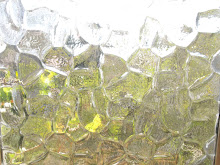Tonight has been one of those internet free-associative wanderings wherein I wake up at 3 am and lie in bed staring at the ceiling in the dark simply just surprisingly awake. So I get up and decide to explore the world a little bit. One thing lead to another, I read some xkcd, read the About page on xkcd (yes, well) which happened to offhandedly mention Boing Boing (which I'd been to before, but decided to check out just for the hell of it). The top article on Boing Boing was about this strange book, that was now, for the first time ever, available online for free. And it showed a picture.

This piqued my interest, so I read the post. It turns out this is a book written by an architect, graphic and industrial designer named Luigi Serafini in Italy in the 70's that has acquired to a kind of mythical status and cult following. It is an encyclopedia of an imaginary world in the language of that world. The introduction was written by Italo Calvino (of course). It has been printed in Italian, French and English and is currently out of print, but can be bought used for anywhere from $150-$500 (if anyone out there is looking for a great Christmas present...). It has crazy pictures, thoughtful layout, is about 370 pages long and really just has to be seen to be believed.





At this point, I would say I was committed, in the way that one makes various important life commitments, to this book. I found an article in the Believer about someone else's first experiences with the book, which then became part of my first encounter with the book.
Here's a brief quote of a quote from that article:
"“It would become a drastically different book the minute it became completely translated,” Jackson said, “which of course could be part of the plan. He could have conceived this as a sort of embryonic or chrysalitic work that at some point would take a kind of completely different shape. But the way I see it, it’s probably meant to hover on the verge of scrutability, to constantly hold forth the possibility of being read but stay resistant at the same time. It’s important that it bothers you with the feeling that there is some content that you ought to be able to extract from it in a normal discursive kind of way. It’s meant to appeal to the rational or exegetical urge. It wants to be interpreted but it won’t let you, and it’s very interesting the way it teasingly asks to be read and then refuses. You could see this as a really really elaborate inkblot. It’s never going to completely yield to you in the sense of giving you insight into the artist’s intentions, so it kind of reverts you back on yourself and makes you notice what you’re noticing and notice the associations that you make. It’s a kind of springboard for your own creative musings.”"
I haven't "read" the book yet, but there it is, safely stowed, a single simple icon on my desktop. I'm very excited about it. Some of the things that exist in this world are just incredible. They fill you with wonder and awe and delight. The world stretches and distorts the way it does for a child, where the boundaries are unknown, the fears fantastical and real, the possibilities wild and limitless. I love that feeling. So, I wanted to share that with you. Here's the download link:
http://www.archive.org/details/Codex-Seraphinianus
[Apparently this link isn't up anymore, but I do have a PDF I'd be happy to share with anyone who wants it. ]
Let me know what you think, yeah? I'm excited for us both.

2 comments:
I discovered this book some years ago, and whatever else you may say or speculate, this is one of the greatest works of art of the last hundred years.........
its wonderful...
Post a Comment